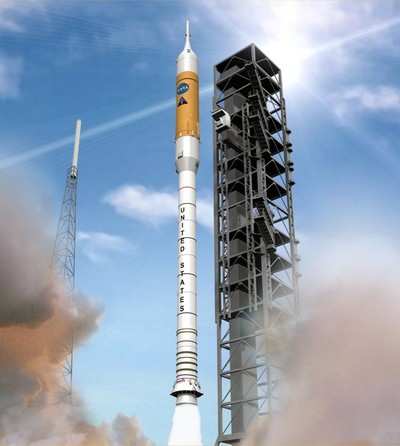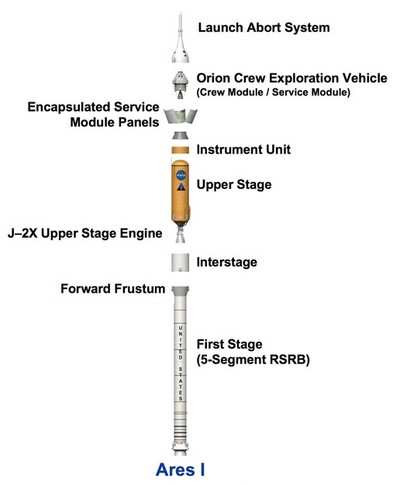Over 200 Companies At Work On NextGen Booster
The Ares I rocket, America's next flagship in space, is now in
development by NASA and its industry partners, and soon will carry
human explorers and new missions of discovery to the moon and
beyond.

Planning and building the Ares I, the first launch vehicle in
NASA's next-generation Constellation Program fleet, is truly a
national effort, supported by more than 200 companies in 32 states
and Puerto Rico -- including Florida firms Honeywell International
Inc. in Clearwater; Parker Hannifin Corp. in Jacksonville; Tara
Technologies Corp. in Daytona Beach; and The Bernd Group Inc. in
Dunedin. All four companies support NASA's Ares I Upper Stage
Engine Project.
Florida-based Ares I contracts have a combined value of more
than $1.4 million.
"Like these Florida companies, contributors across the nation
are providing critical engineering expertise, hardware and
materials fabrication and testing and a wide spectrum of support
services," said Steve Cook, manager of Ares Projects at NASA's
Marshall Space Flight Center in Huntsville, Ala. "Their work
ensures that NASA will, in the next decade, successfully fly the
Ares I rocket to orbit to support the International Space Station
and send Americans back to the moon, preparing the way for
rewarding new journeys of discovery throughout the solar
system."
The 84-foot-long Ares I upper stage is propelled by a J-2X main
engine fueled with liquid oxygen and liquid hydrogen. The J-2X is
an evolved variation of two historic predecessors: the powerful J-2
engine that propelled the Apollo-era Saturn IB and Saturn V
rockets, and the J-2S, a simplified version of the J-2 developed
and tested in the early 1970s but never flown.

Approximately 133 seconds and 36 miles into flight, after the
Ares I first stage expends its propellant, the first stage is
jettisoned. The J-2X ignites, burning for approximately 465 seconds
to consume more than 302,200 pounds of propellant as it pushes Ares
I to an altitude of roughly 83 miles. The Orion crew exploration
vehicle then separates from the upper stage, and its own engine
fires to insert the spacecraft into low Earth orbit. The upper
stage reenters Earth's atmosphere and splashes down in the Indian
Ocean.
NASA's Constellation Program fleet -- now more than four years
into development -- includes the Ares I, the Ares V heavy cargo
launch vehicle and the Orion spacecraft. The Ares V will serve as
NASA’s primary vessel for safe, reliable delivery of
large-scale hardware to space, including the Altair lunar lander,
also now in development, and supplies needed to establish a
sustained human presence on the moon. The Orion will safely ferry a
crew of four to six astronauts to a variety of destinations in
space.
The first Ares I test flight, called Ares I-X, is scheduled for
2009. The first crewed launch of the Ares I rocket is planned for
no later than 2015, and NASA plans to send the first missions back
to the moon around 2020.
"We're proud to help continue the nation's tradition of
leadership in space," Cook said. "Since NASA's creation 50 years
ago, our endeavors have yielded or inspired technology innovations
that enrich nearly every commercial industry and benefit Americans
and people around the world in countless ways. Our team effort on
Ares I will continue that legacy, and also help to stimulate our
economy and reignite the country's passion to journey to worlds
beyond our own.
"It takes a nation to build a rocket," Cook added. "And this is
the rocket that will inspire our nation."
The Marshall Center manages Ares Projects for NASA's Exploration
Systems Mission Directorate in Washington. The Constellation
Program Office at NASA's Johnson Space Center in Houston leads the
next-generation launch vehicle development program.

Three prime contractors lead NASA's Ares I effort for industry.
NASA awarded the contract to lead the Ares I First Stage Project,
valued at approximately $1.8 billion, to Alliant Techsystems (ATK)
of Minneapolis in August 2007. The Boeing Co. of Huntsville, AL was
awarded Ares I contracts valued at approximately $2 billion -- $1.2
billion for the Upper Stage production contract, awarded in
September 2007, and $800 million for the Ares I Upper Stage
Avionics Unit, awarded in December 2007. The contract for the Ares
I Upper Stage Engine Project, valued at approximately $1.2 billion,
was awarded to Pratt & Whitney Rocketdyne Inc., of Canoga Park,
CA in June 2006.
 ANN's Daily Aero-Linx (04.13.24)
ANN's Daily Aero-Linx (04.13.24) ANN's Daily Aero-Term (04.13.24): Beyond Visual Line Of Sight (BVLOS)
ANN's Daily Aero-Term (04.13.24): Beyond Visual Line Of Sight (BVLOS) Airborne 04.09.24: SnF24!, Piper-DeltaHawk!, Fisher Update, Junkers
Airborne 04.09.24: SnF24!, Piper-DeltaHawk!, Fisher Update, Junkers Aero-News: Quote of the Day (04.14.24)
Aero-News: Quote of the Day (04.14.24) ANN's Daily Aero-Term (04.14.24): Maximum Authorized Altitude
ANN's Daily Aero-Term (04.14.24): Maximum Authorized Altitude





